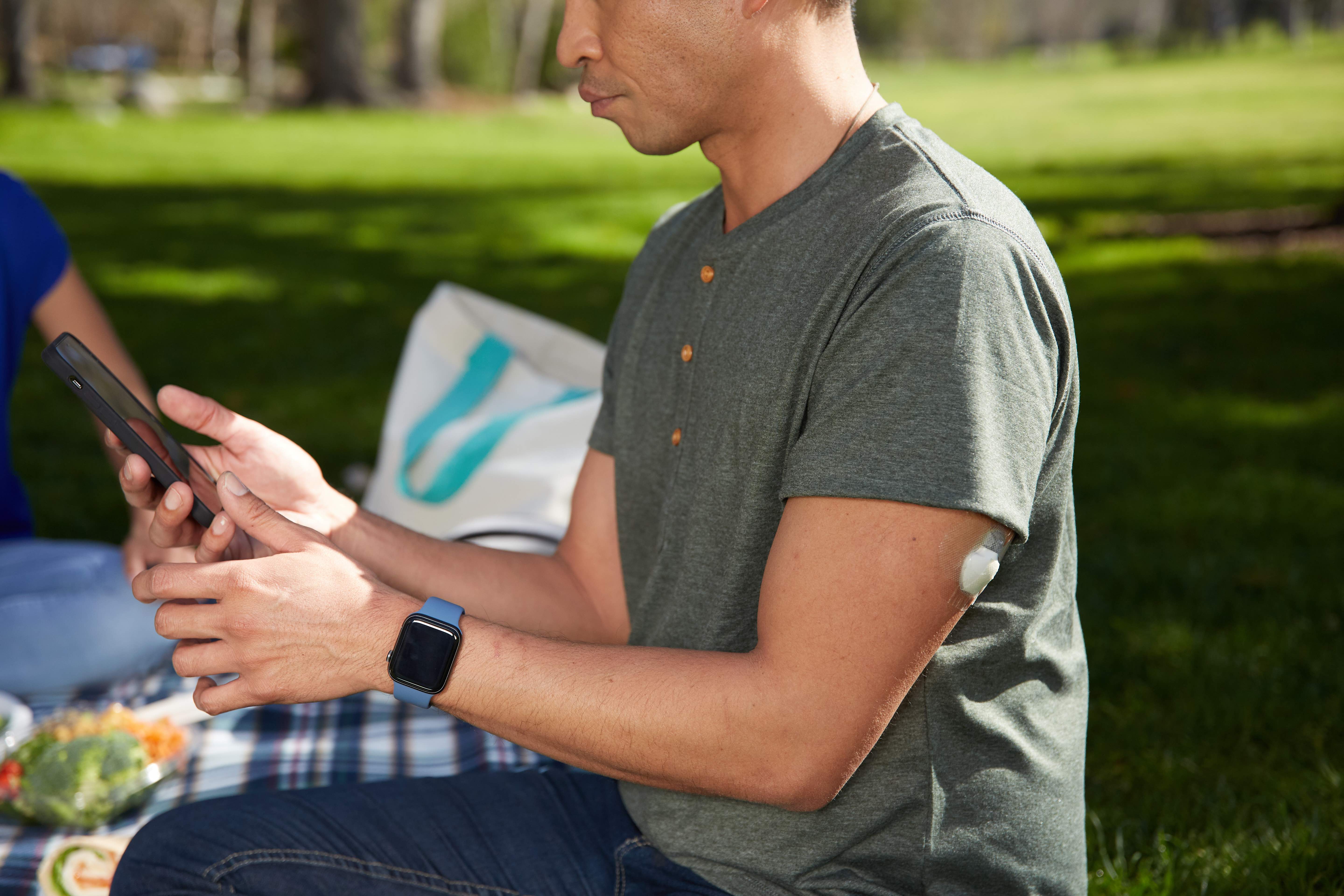With concerning and growing data on the prevalence of diabetes in Malaysia, wearable smart devices targeting diabetics offer advanced and effective management options for children and adults who are insulin-dependent to regulate their blood glucose.

In Malaysia, the prevalence of type 2 diabetes (T2D) has risen over the years from 11.2% in 2011 to 18.3% in 2019, or 3.9 million of the adult population above the age of 18. That’s equivalent to one in five adults living with diabetes, according to the Ministry of Health’s National Health and Morbidity Survey 2019.
On another note, the diagnosis of diabetes in children is often misdiagnosed. The awareness and lack of understanding that children too can develop diabetes is worrying. 1 in 5 children in Malaysia was recently diagnosed with Type 1 diabetes (T1D) was wrongly managed due to the wrong diagnosis made.¹
In adults, we are also concerned that about half of them were unaware of their disease status. Many were already pre-diabetic and yet not detected and managed early. This has repercussions. The longer a person has untreated diabetes, the higher the risk of complications which may also lead to premature death.
Therefore, early detection of diabetes both in children and adults coupled with good glucose monitoring as well as prompt and accurate insulin delivery are crucial in managing the disease well and preventing early complications or premature death.
Insulin Pump Therapy and Continuous Glucose Management Help Diabetics Meet Glucose Targets
Smart wearable devices such as insulin pump therapy and the continuous glucose monitoring system are two technological health advancements in recent years that are able to help people living with diabetes, both adults and children.
These devices are designed to benefit especially those living with T1D as well as T2D.
It aims to help people living with diabetes to better manage their glucose levels and enjoy a better quality of life; to help them live more and worry less, knowing that their condition is being monitored and treated even as they go about their daily lives.

Understanding Diabetes
Type 1 and Type 2 diabetes occur because of different causes.
In T1D, the pancreas fails to produce insulin as the body's immune system attacks the cells. One of the main functions of the pancreas is to make insulin and regulate blood glucose in the body. In the absence of insulin, the body is unable to process the sugar (from food and body storage) effectively causing persistently high blood glucose levels.
Typically, T1D presents with diabetes ketoacidosis; an emergency state where the body is unable to cope without insulin often develops in children, teenagers, and young adults although the disease can happen at any age.
In T2D, which is more common and often preventable, is slightly more complex than what we previously knew. The basic principle is insulin resistance which means that the body has become resistant to insulin. The most known risk factors that contribute to the development of T2D include being overweight and obese, lack of exercise, and genetics.
Children and adults with T1D need insulin to survive. This means that for every meal, insulin injections are necessary. People living with T1D take 4-5 insulin injections daily.
Some people with T2D may also require insulin injections for better management of their condition. They may need 1-2 injections or more depending on the severity of their diabetes.
Uncontrolled diabetes causing recurrent hyperglycaemia or high blood glucose levels can lead to serious damage to many parts of the body’s system, resulting in cardiovascular, eye, kidney and nerve complications. Concerns of low blood glucose levels (hypoglycemia) due to overestimating insulin and food ratio is equally important. Severe hypoglycemia can lead to seizures and ischemic insults to the brain especially in young children. Having a balance of getting the right insulin dose and blood glucose levels remains a challenge for all people living with diabetes.
This is where insulin pump therapy and continuous glucose monitoring can be the game changer in diabetes management.
Insulin Pump Therapy
Insulin pump therapy is now an option for the management of diabetes in children and adults with diabetes.
An insulin pump is a device that can help to manage diabetes. It delivers continuous and customised doses of rapid-acting insulin 24 hours a day. They will only need to change their needle once every 2-3 days. As such, significantly fewer insulin injections are required.
The pump provides insulin in two ways. The first is to provide background insulin, that is, small amounts of insulin that are released continuously throughout the day.
The second approach is to provide mealtime insulin whereby additional insulin can be delivered on demand to match food intake or to correct high blood sugar.
How the Insulin Pump works
A pump delivers insulin via a thin, flexible tube called an infusion set. Insulin goes into a reservoir inside the pump and the flexible tubing delivers insulin from the pump to the body.
The insulin pump therapy offers many benefits.
Children, adolescents and adults with diabetes will experience positive changes when switching to insulin pump therapy. There will be fewer injections as an infusion set can last a few days. The insulin pump which can hold up to 300ml of insulin means that people living with diabetes do not need to carry their insulin supplies when they are on the move. An insulin pump can be comfortably worn during everyday life, work, exercise and formal occasions.
Insulin pumps can also be programmed to deliver insulin at different rates throughout the day and automatically customise insulin intake based on food consumption.
Continuous glucose monitoring therapy
Home monitoring of blood glucose levels using a finger prick blood glucose meter 3-4 times a day is the standard care of practice for all patients with diabetes. Recently, a continuous glucose monitoring (CGM) technology which tracks blood glucose levels every few minutes through a sensor is available as an option for diabetes management.
CGM systems have a tiny sensor inserted under the skin, either on the abdomen or arm. It measures the interstitial glucose level, which is the glucose found in the fluid between the cells. The sensor can last between 7-14 days (according to type). This translates to a minimal or no finger prick needed to check blood glucose at home.
Most insulin pumps can now be paired with an app or a continuous glucose monitoring system (CGM), that informs how the blood glucose fluctuates with real-time blood glucose readings, trends, and alerts.
This all translates to better glucose controls, fewer incidences of hypoglycaemia and hyperglycaemia as well as accurate insulin delivery based on an individual’s insulin needs.
Wearing these smart devices concurrently offers a comprehensive approach to diabetes management.
Benefits of Smart Devices for Children and Adolescents with Type 1 Diabetes
Both these smart devices are suitable for children and adolescents who have T1D with the following benefits:
Significant reduction of finger pricks and insulin injections can be achieved by adopting a combination of CGM system and insulin pump therapy.
Optimum monitoring for hypo and hyperglycemia. As children are naturally active, many parents fear that too much activity might cause their children’s blood glucose levels to drop dangerously low. Having these devices can help parents monitor their blood glucose closely and prompt action can be taken to ensure glucose levels are optimised.
Giving the right dose for the right amount of food. Young children have bizarre food behaviour, intake, and time. Having the right device can help parents to deliver insulin and check blood glucose levels easily with minimal hassle. The insulin pump can also be programmed to reduce the insulin levels accordingly especially if blood glucose goes too low. This prevents complications and reduces parents’ worry in general.
Conclusion
Working in tandem in the background, the dynamic duo of the CGM and insulin pump therapy, offer real-time adjustments for better glucose management and lifestyle to prevent early complications. This is an evolution of knowledge.
The system that can now regulate as near perfection to the natural pancreas function is a dream came true for people living with diabetes. When the system detects high blood glucose levels, the insulin pump would work to recognise the change and increase insulin delivery as necessary. Conversely, if blood glucose levels are falling, the system would recognise the trend to reduce and suspend insulin delivery.
This way, a person living with diabetes can be assured that the right amount of insulin is delivered at the right time.
¹ Mavinkurve, M., Jalaludin, M. Y., Chan, E. W. L., Noordin, M., Samingan, N., Leong, A., & Zaini, A. A. (2021). Is misdiagnosis of type 1 diabetes mellitus in Malaysian children a common phenomenon?. Frontiers in Endocrinology, 12, 606018.
This article is provided by Assoc Prof Azriyanti Anuar Zaini, Consultant Paediatrician, Paediatric Endocrinologist, University Malaya Medical Centre
The views expressed here are those of the author/contributor and do not necessarily represent the views of Malaysiakini.

